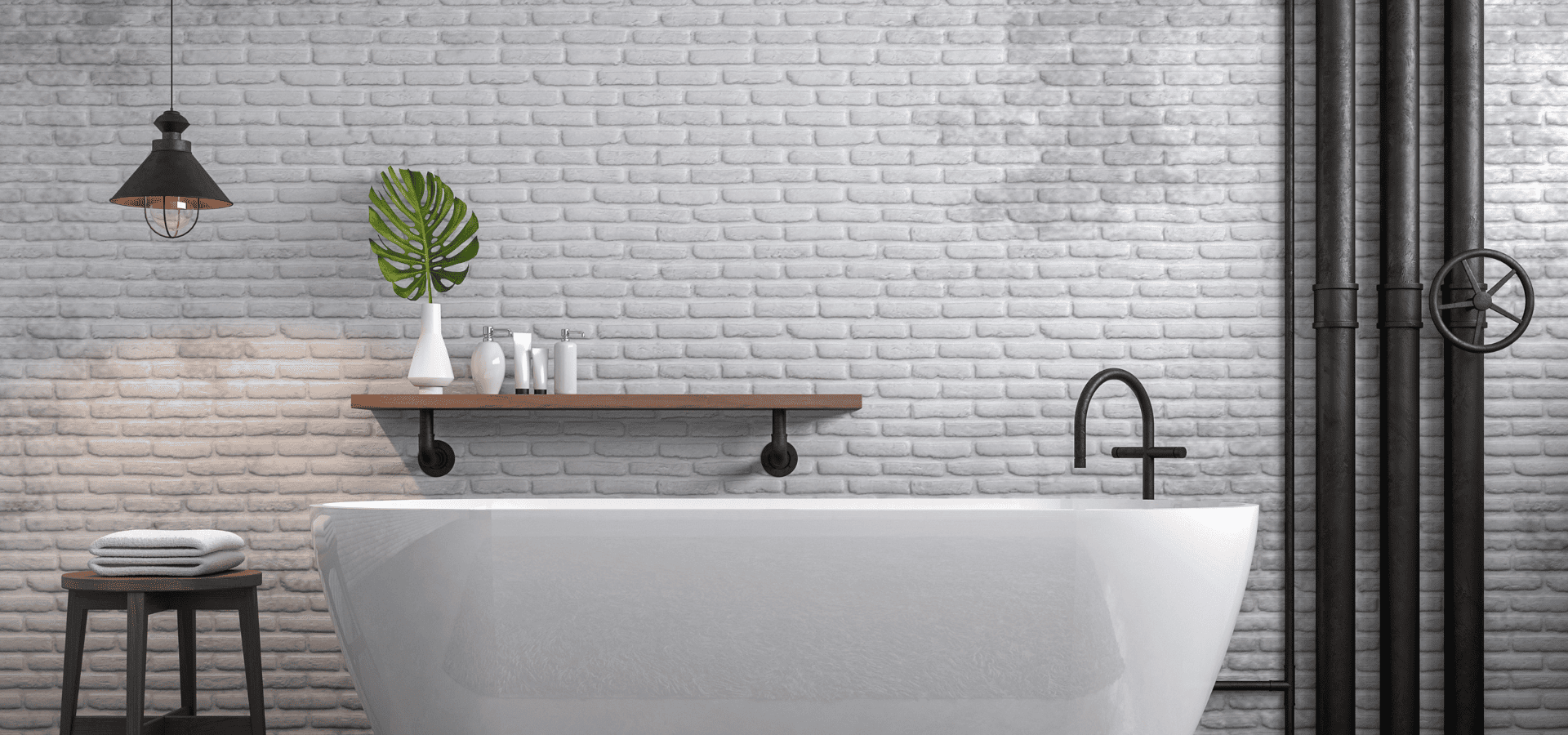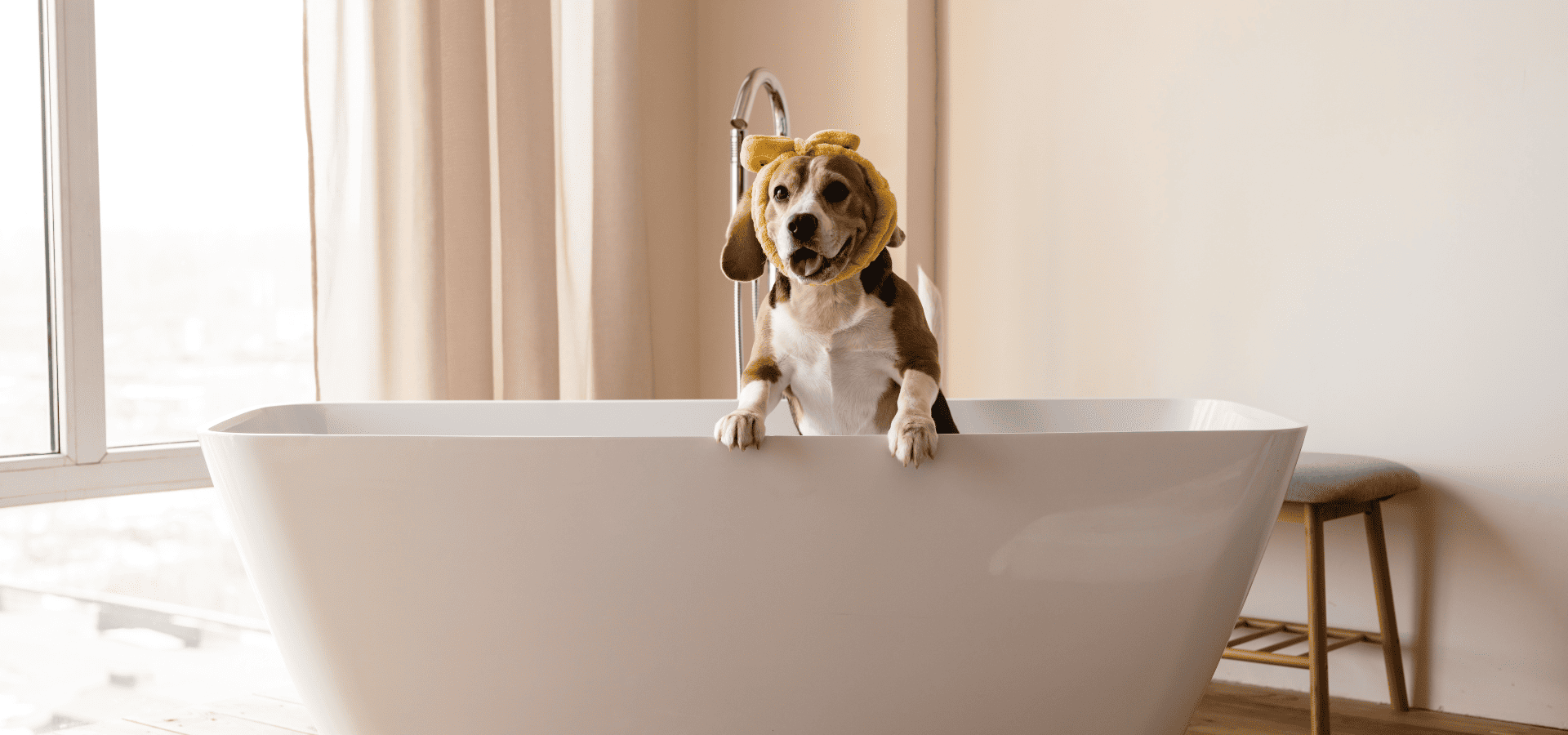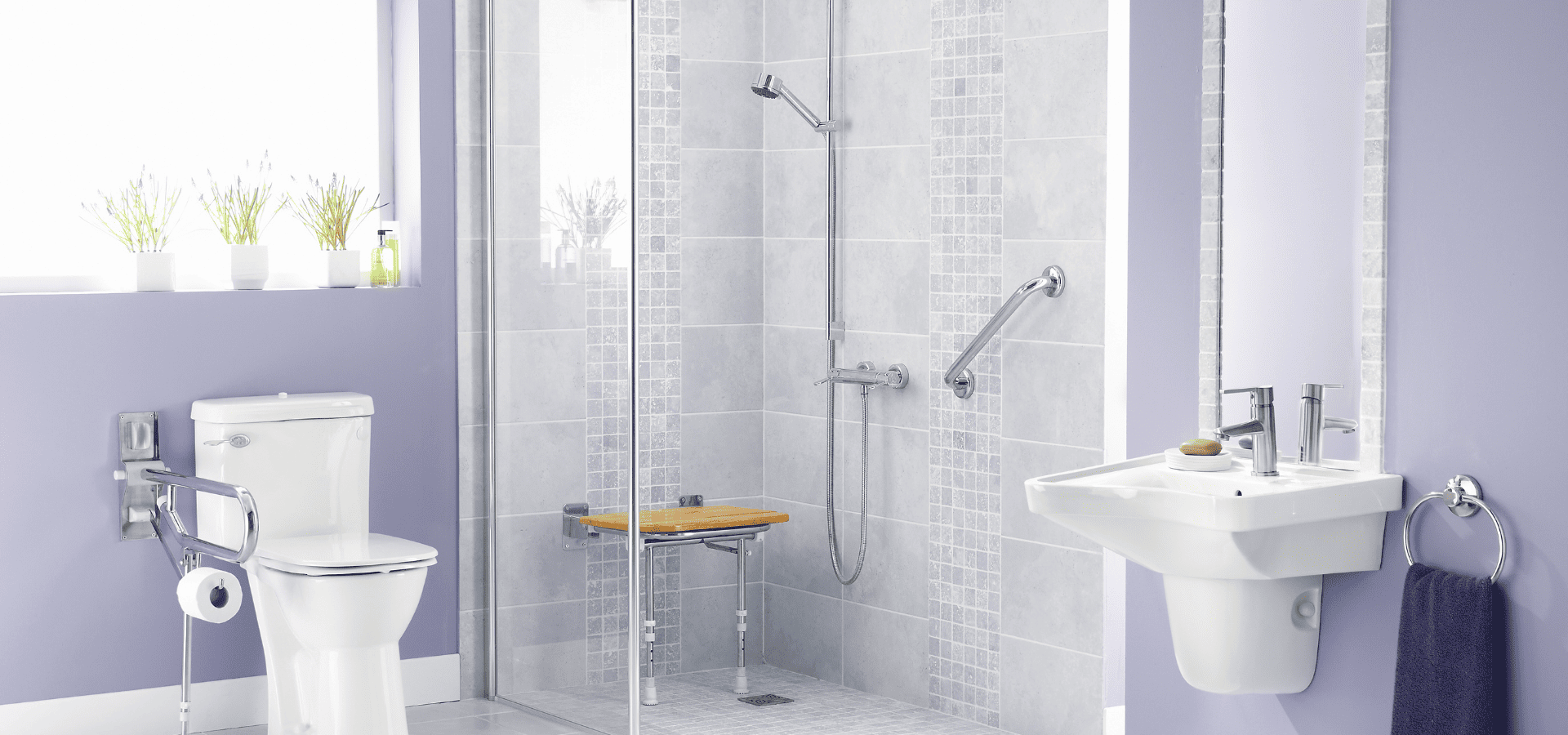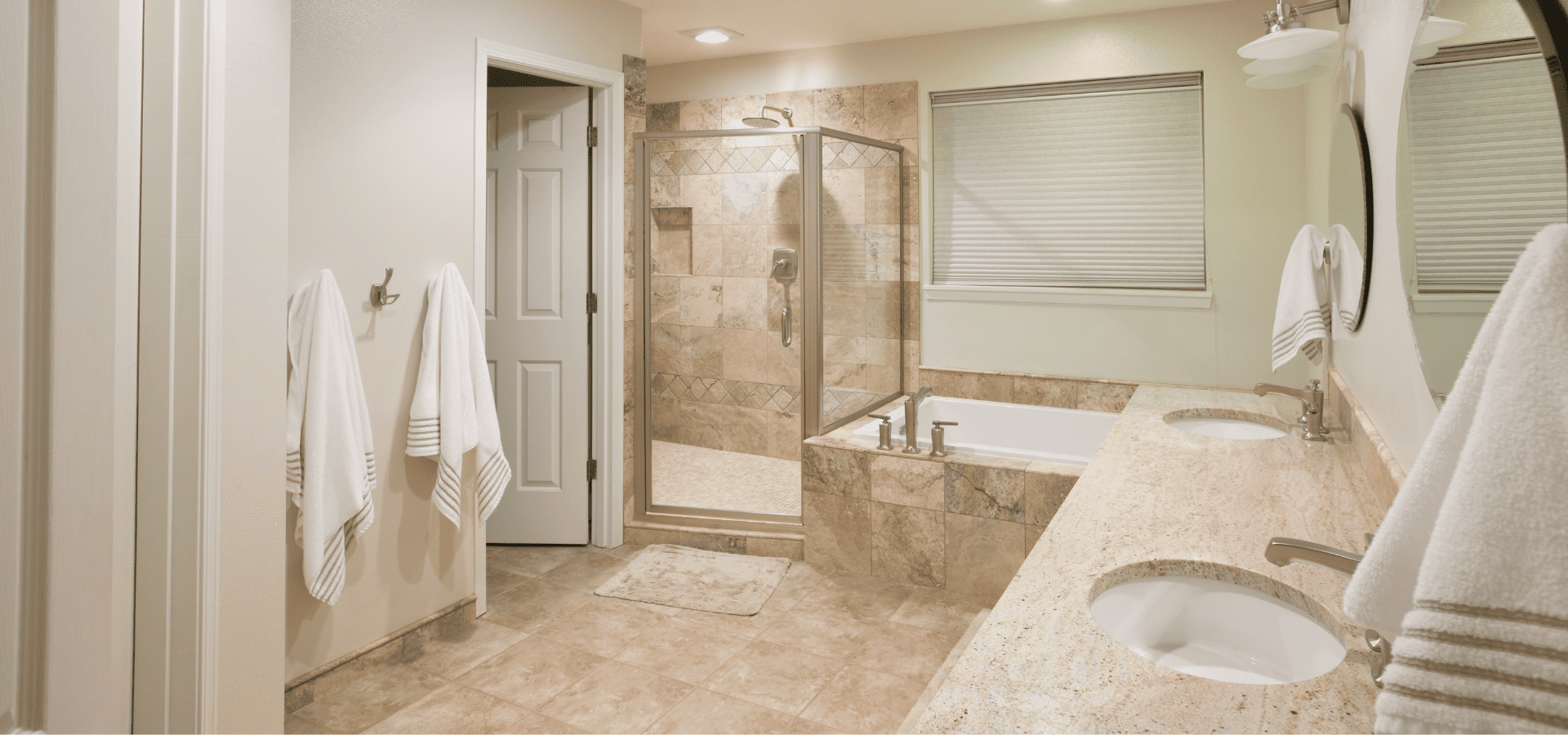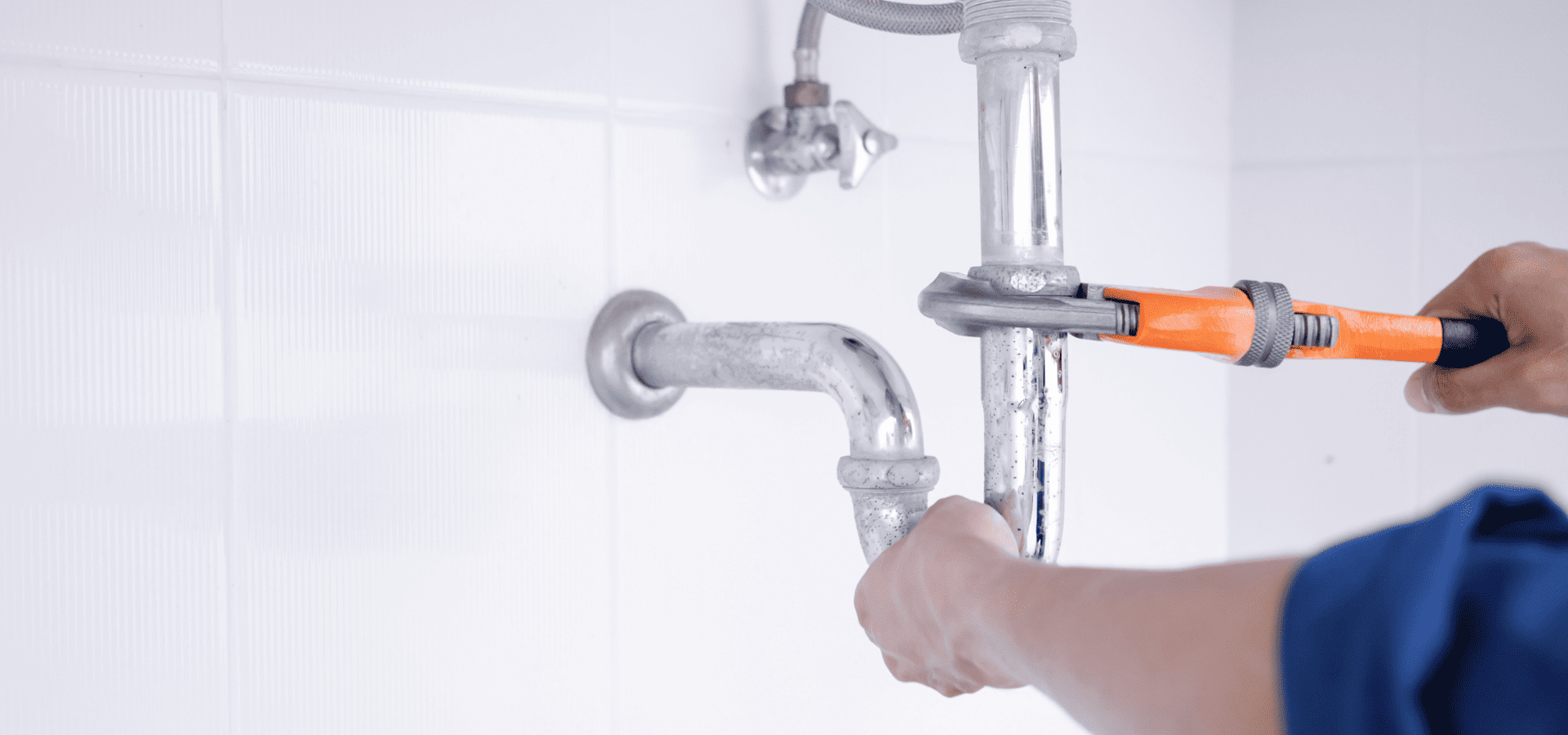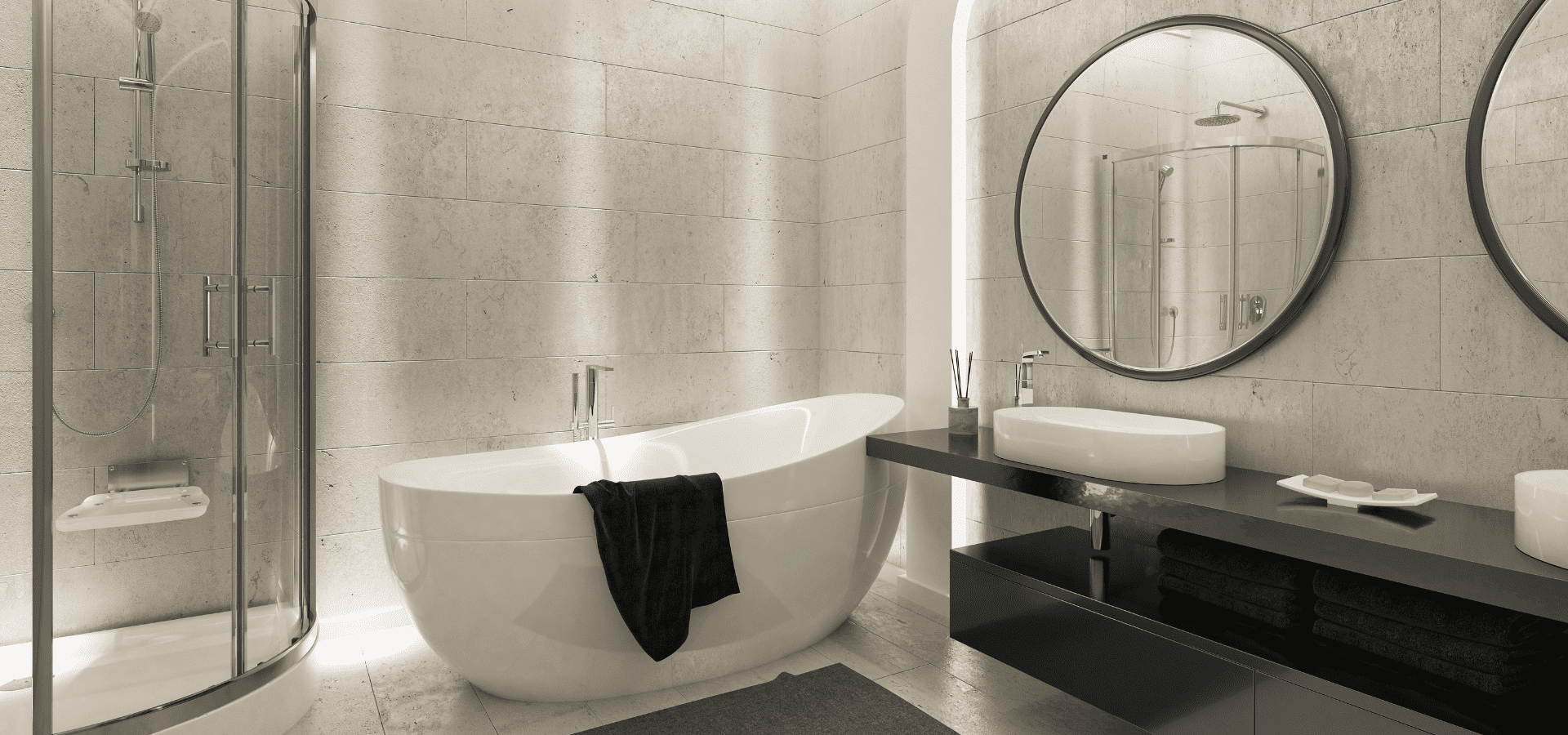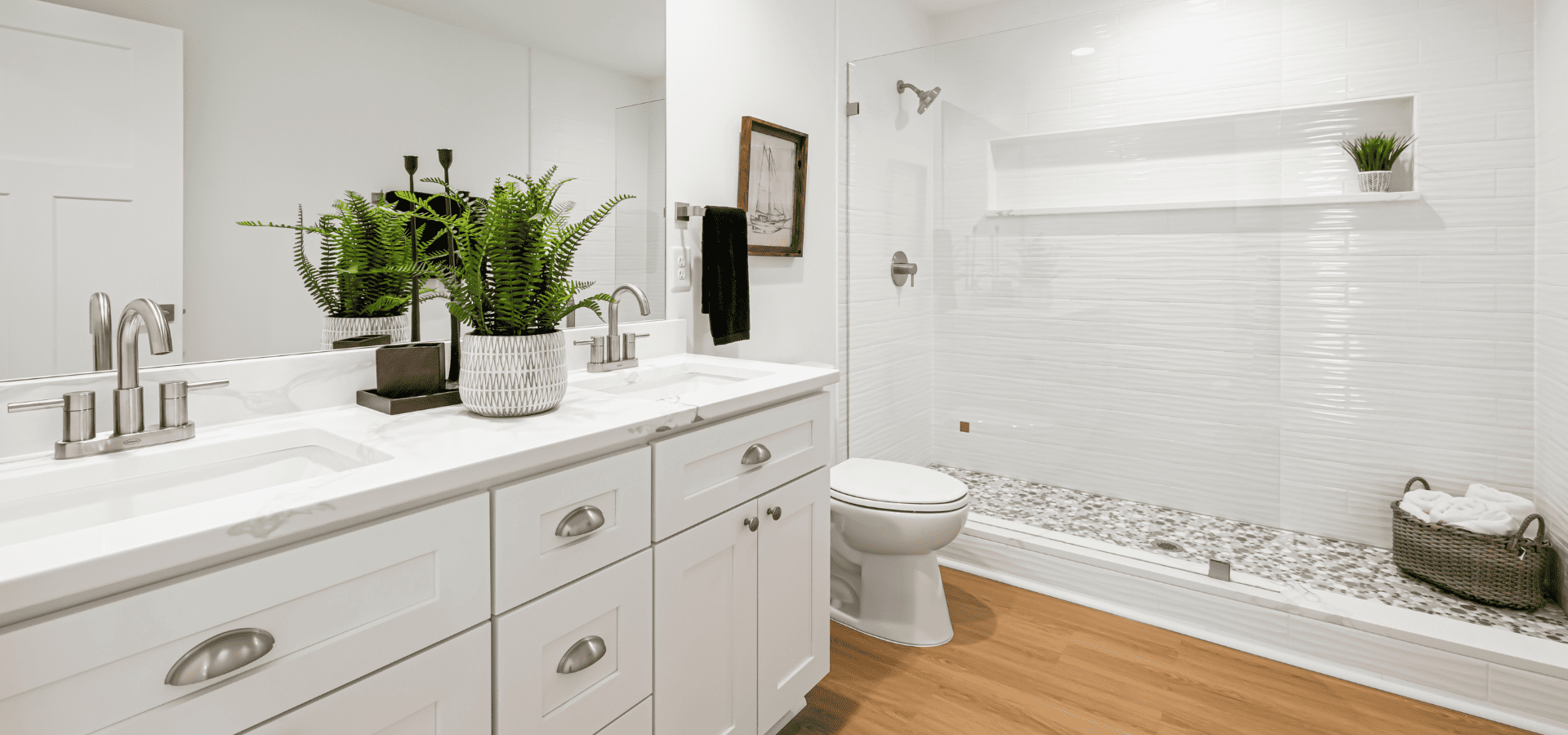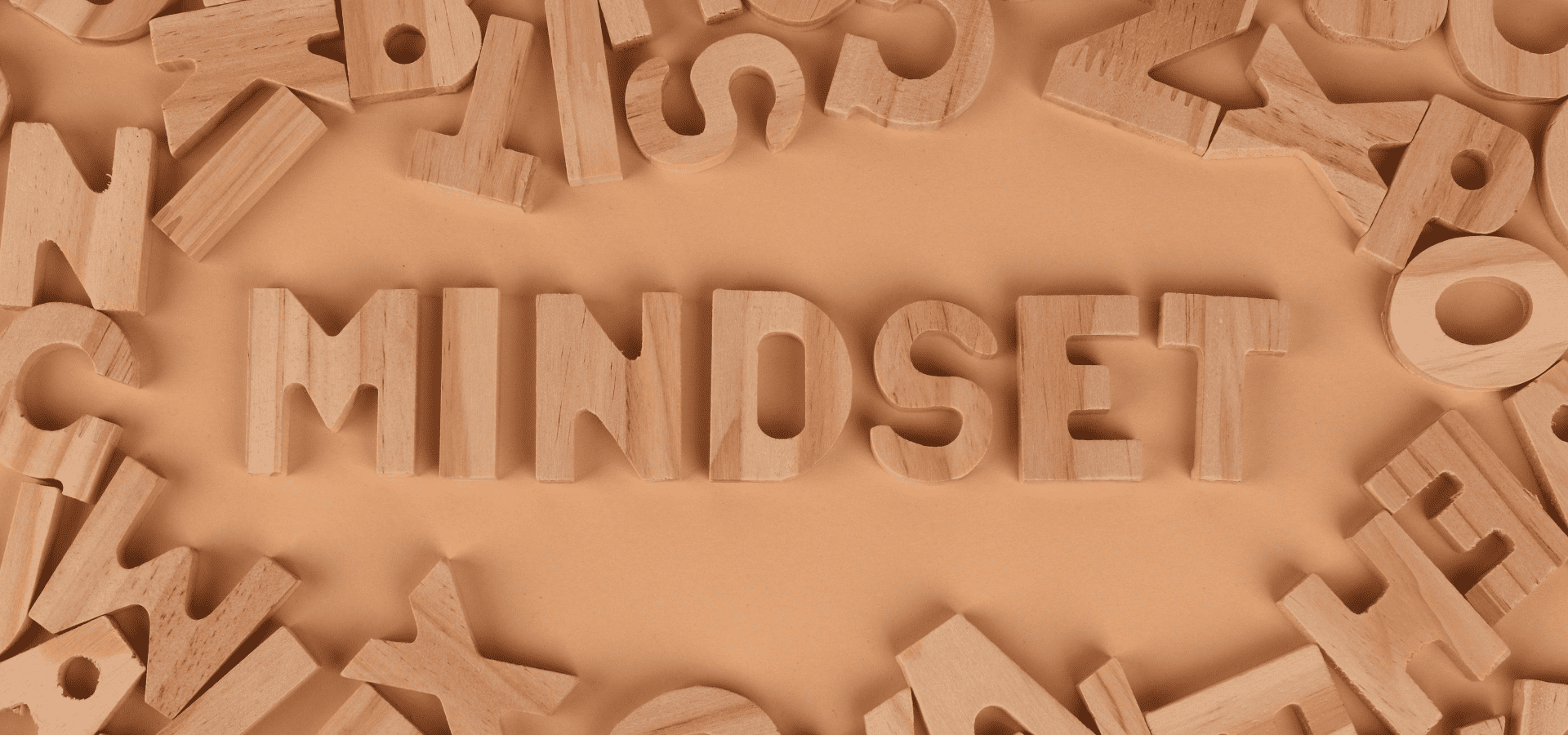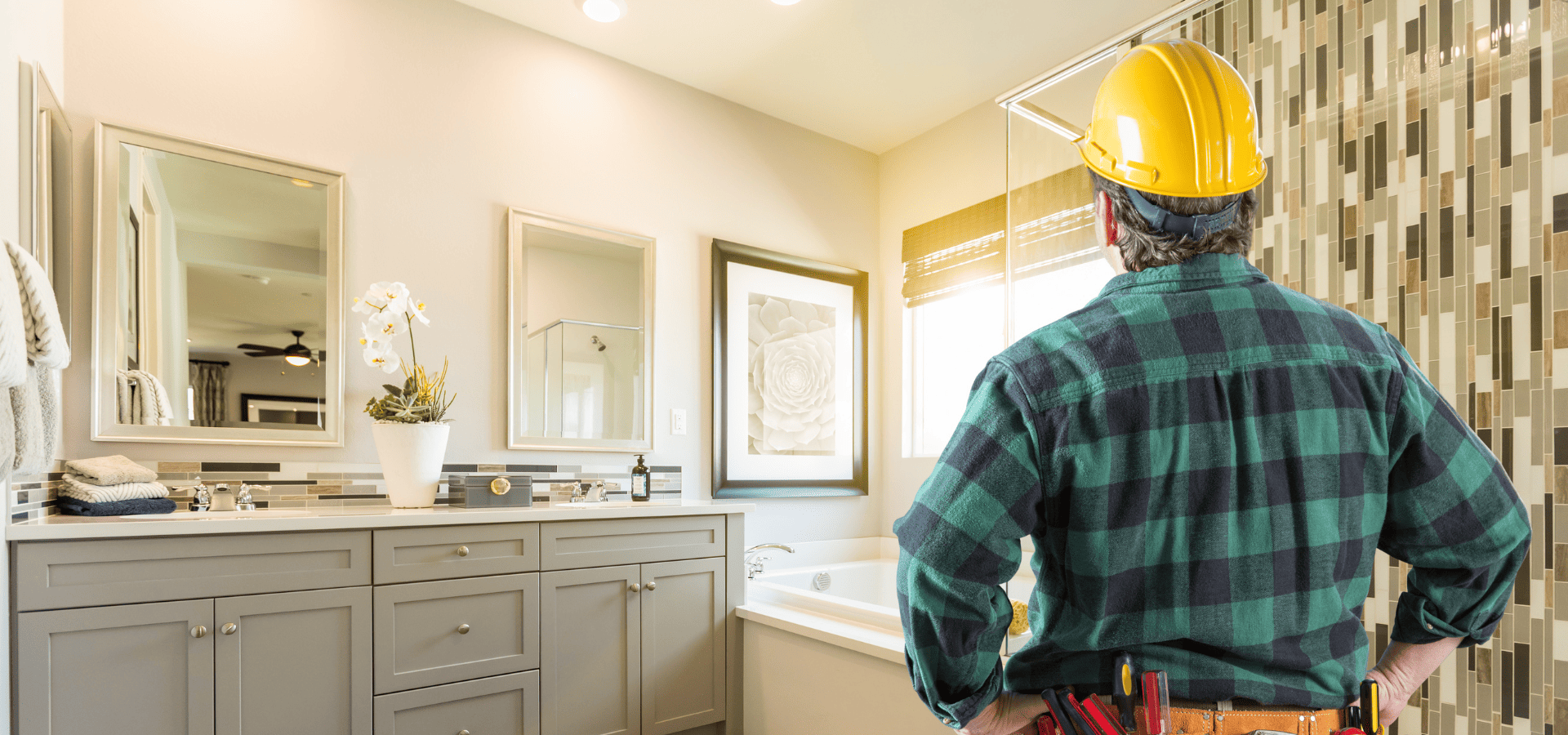Beginner's Guide To Bathroom Flooring Options
Your bathroom’s flooring is going to set the tone and aesthetics of your bathroom.
But it’s not just as simple as choosing the one you like or that can create the mood or vibes that you want.
You need to also understand what you’ll be getting with each flooring material–its maintenance needs, pros, cons, and of course, price too.
If you're ready to find the right flooring option for your bathroom, dive right in!
1. Ceramic/Porcelain
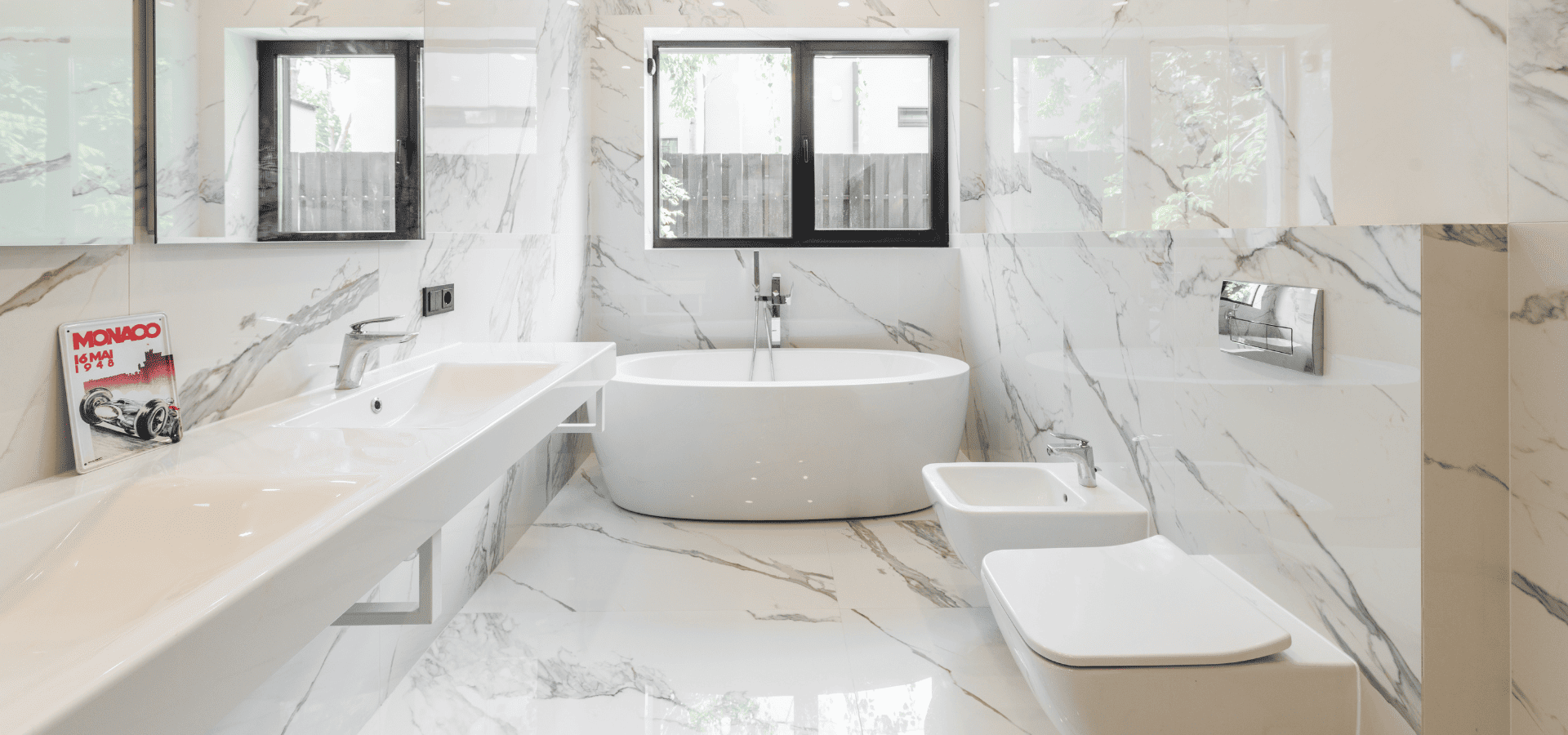
Ceramic is one of the most commonly used bathroom tile materials not only because of its affordability, but because despite its affordability, it still looks very elegant and sophisticated.
Ceramic can mimic natural stones and many other textures, eg Moroccan tiles, cement, and so on, so it’s very versatile.
Ceramic is also easy to clean, relatively tough, and water-resistant, making it a great budget option for bathrooms.
However, given that it’s one of the most affordable materials, ceramic is less durable than many other materials. Ceramic tiles can also be slippery when they’re wet.
In addition, ceramic isn’t able to fully mimic natural stones, so you won’t be able to fully get the higher-end look and feel that you want.
On the other hand, porcelain, which is a higher-quality and denser type of ceramic, is able to imitate natural stones quite well.
So if you're looking for a material that can give you the look of natural stones like marble and travertine, but at a fraction of the price, porcelain is a better option.
Porcelain is also one of the toughest flooring options out there, which means it will not only last longer, but also scratch and damage much less easily.
Plus, porcelain is virtually waterproof, so you won't need to worry about moisture issues or damage at all with porcelain tiles.
In a nutshell, porcelain is much tougher than regular ceramic, lasts much longer, and more aesthetically pleasing.
Needless to say, this also means it's going to cost more. Porcelain is usually about 50% more expensive than regular ceramic, which is only fair considering the added durability and aesthetics.
Even being 50% more pricey than regular ceramic, porcelain is still considered a mid-range option and much cheaper than natural stone, so if you’re looking for a mid-range flooring option for your bathroom that can give you the look of natural stone, porcelain is probably what you’re looking for.
2. Natural Stones
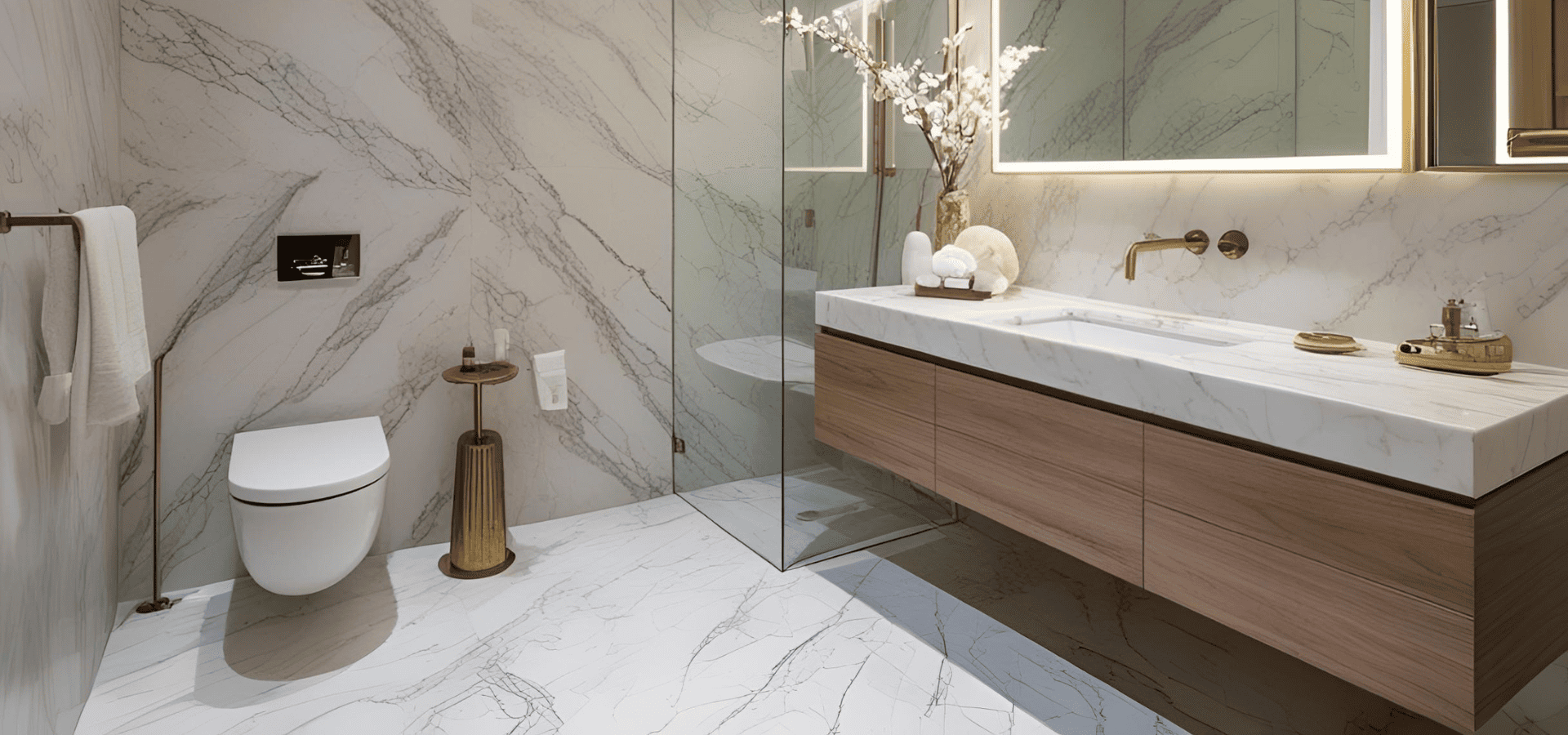
Next, natural stones are often considered the epitome of luxury. This isn’t attributed just to the natural, highly sophisticated, classy look that they bring to the table, but also their hefty price tag.
In reality, porcelain is arguably a more practical choice since it’s able to recreate the look of natural stones to a very large extent while lasting longer and being much more cost-efficient.
However, as we just mentioned, natural stones aren’t just valued for their aesthetics, but they’re often a symbol of wealth and luxury.
While a visitor likely wouldn’t be able to differentiate between actual natural stones and natural-stone-looking porcelain, it’s still a huge flex to be able to brag about your bathroom flooring being actual, real natural stone.
Besides, natural stone doesn’t just look pretty. While porcelain does usually outlast natural stone, that’s not a fault of natural stone so much as a strength of porcelain, as porcelain is just on a different level from most other flooring options when it comes to durability and longevity.
Natural stones can easily last anywhere from 50-100 years, and even longer if well maintained, so they’re definitely no slouch.
Ultimately, natural stones are still extremely long-lasting and tough, and their natural beauty is unmatched, so the prices they command are pretty justifiable.
Also, consider that natural stones, being luxury materials and a premium upgrade in your home, will help bring up the value of your home and can help command a higher selling price.
The only real problem with natural stone is maintenance. Natural stones usually need to be sealed annually or once every six months, and they’re more prone to staining than many other bathroom flooring options.
Nevertheless, natural stones bring a natural, sophisticated beauty that no other material, not even porcelain, can fully mimic. If you value natural beauty (and the bragging rights), natural stones are going to be your best bet, especially if you're doing a
luxury bathroom remodel.
3. Vinyl
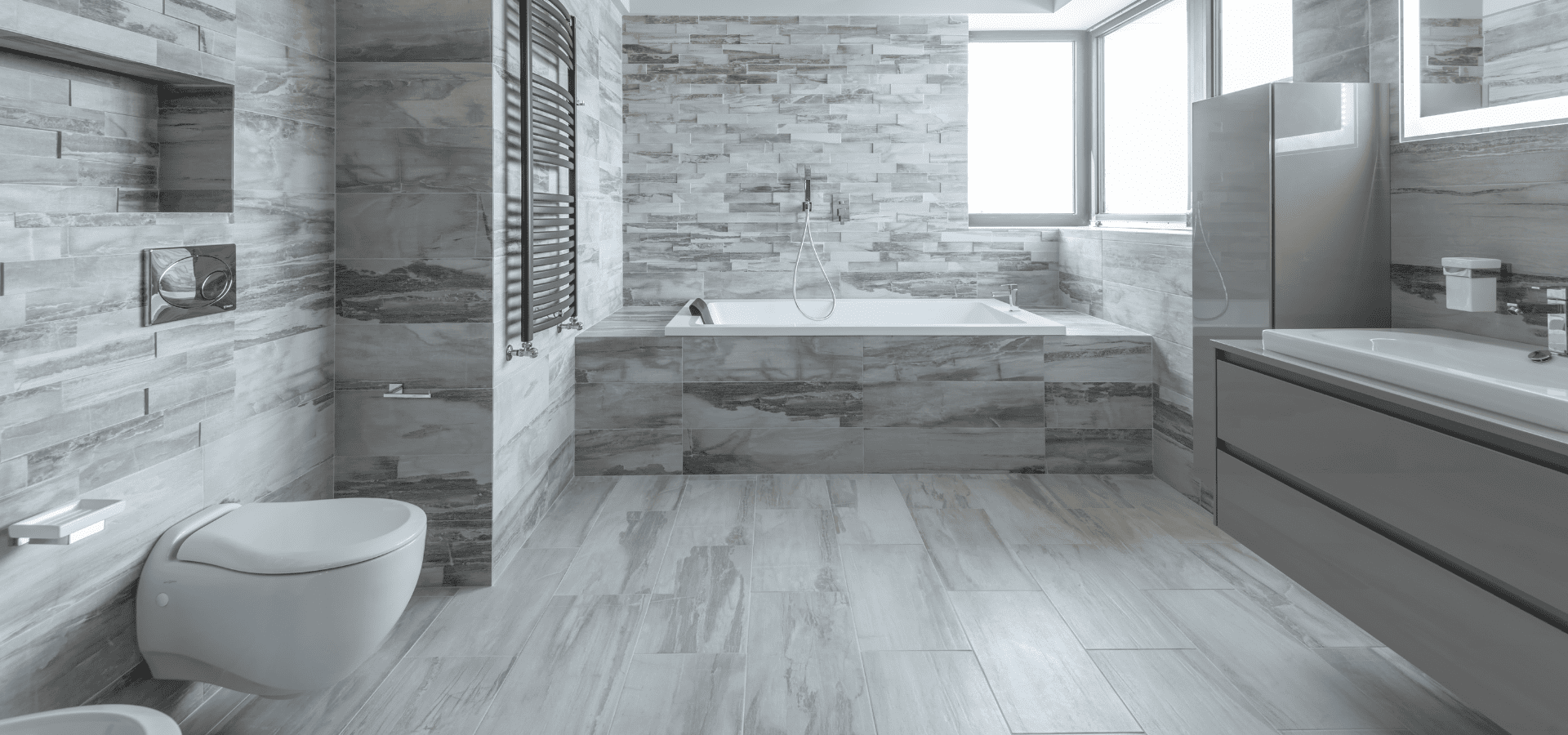
If you’re looking for an option that’s going to leave more cash in your pocket, there’s no better material than vinyl.
Vinyl is, in most cases, going to be the cheapest material available for your bathroom floor tiles.
Just because it’s a budget option doesn’t mean it’s low-quality though.
First off, vinyl is able to recreate a variety of textures and is more versatile than even ceramic.
Of course, like regular ceramic, it isn't able to 100% recreate the texture of natural stones due to the complexity and depth that natural stones have.
However, it does a very convincing job with most other simpler materials like wood and some smooth stones.
Durability-wise, it fares well too, being able to resist scratches and dents commendably. It’s waterproof too, so water damage is out of the question as long as installation is done properly.
Furthermore, vinyl is usually made to be very easy to install, in keeping in line with the spirit of affordability, so you can DIY the installation and save on the professional.
So at this point, you might be wondering how the cheapest option on the market can perform so well in all these aspects, and if so, why does it cost so little?
Well, there is one aspect in which it is quite lacking in compared to other materials–longevity.
The lifespan of vinyl is a mere 10-20 years, which by itself doesn’t sound particularly shabby, until you consider that even the next best budget option, ceramic, can easily serve you at least 40-60 years, sometimes even more, depending on how well you maintain it.
So basically, what you’re getting with vinyl is a great all-rounder that will last you for a decade or two, which is only fair since it’s so cost-effective.
Another question that you might be wondering is why then not opt for ceramic over vinyl, since they have essentially the same qualities, except ceramic will serve you for longer and only costs slightly more.
Well, that’s a very valid point, and indeed, ceramic’s material cost is only about 30-50% higher than vinyl while lasting multiple times as long as vinyl.
However, installation costs are a different story. As we just explained, vinyl can be very easily installed, so you can either do it yourself or hire someone to do it for you, which wouldn’t take too big of a chunk out of your wallet since it’s an easy and straightforward job.
Ceramic, on the other hand, usually costs about 3-5 times as much as vinyl to install, and you can’t tackle it on your own due to the complexity of the project.
Ceramic tile installation involves subfloor prep, cutting out the tiles precisely, mixing and applying thinset mortar, and then finally spacing and leaving the tiles correctly, along with grouting and sealing.
Sure you could try to tackle it on your own, but you’re highly likely to mess up the installation and need to call in a professional anyway. And the professional would then have to remove your botched tiles, likely breaking them in the process, and so you’d end up paying for extra material and the professional.
All things considered, while the material cost of ceramic isn’t much more than vinyl, the overall cost of the project usually ends up being multiple times that of vinyl, because of the complexity and thus higher price of the installation.
So if you’re on a really tight budget, it’s best to stick with vinyl, as you also have the option to DIY the installation and further keep costs down.
When you add in the cost of installation, ceramic may last multiple times longer than vinyl, but it also costs multiple times more. So it’s not really a case where either is better than the other.
Both have similar properties, which means the choice will come down to whether you’d rather pay more upfront and replace your tiles less often, or leave more money in your pocket for now and replace your flooring tiles more often.
4. Seldom-Used Flooring Options
Ceramic, porcelain, vinyl, and natural stones are going to be what you find in the majority of bathrooms. This is because their qualities, eg their water resistance, toughness, and ability to handle human traffic, make them the best suited for bathroom flooring.
They aren’t the only options, obviously, but the other materials are generally used only in special situations and aren’t suitable for regular bathrooms, so we won’t dive too much into them.
Less Common Options
Engineered wood and laminate are sometimes used when homeowners have very tight budgets or in powder rooms, though even then, they’re not commonly seen.
Laminate is very prone to water damage and has very little water resistance, so there’s no question that it can’t be used for normal bathrooms.
But it’s also extremely cheap–about 20-40% cheaper than even vinyl, which is why if you’re on a shoestring budget, laminate can make sense for your powder room since powder rooms’ floors very seldom get wet.
That said, don’t expect it to last long. It’ll usually require replacement within a decade or so.
As for hardwood, being wood, it doesn’t hold up too well against moisture either, which is why again, it’s usually only used for powder rooms.
Hardwood gives off a natural, warm, luxurious vibe, which is why some people love it. If you’re one of them though, note that it isn’t a budget option, but a mid-range option, so you can expect to pay about the same as you would for porcelain.
Very Rarely Seen Options
These remaining materials are very rarely seen and are usually used only in very specific settings:
- Rubber: Rubber is very slip-proof, but not very nice aesthetically, so you’ll typically only see it in daycares or senior homes where precautions need to be taken to minimize slips.
- Bamboo and cork: Bamboo and cork just don’t resist water well. In theory, they can be used for powder rooms, but they’re not very durable either, so rarely will people pick them over vinyl or even laminate.
- Concrete: Concrete can actually be quite stylish, but not many homeowners will appreciate the industrial look, so they’re typically only found in industrial designs, which are quite rare.
- Epoxy: Epoxy is pretty tough and has a decent lifespan of 20+ years, but it has a rather plain look and isn’t very aesthetically pleasing, so it’s seldom used.
- Linoleum: This was the vinyl of the olden days, but as technology advanced, vinyl eventually became a better option, so linoleum is no longer used nowadays.
Final Tips
With technological advancements, nowadays, even cheaper materials like vinyl and ceramic can give you the high-end look of natural stones. That’s obviously great news, as it means homeowners can have their desired aesthetic, or at least get very close to it, at a reasonable price.
Price isn’t a huge obstacle anymore, so it’s going to come down to your needs and preferences. Consider what you’re willing to spend more on.
Would you rather spend more up front and spend less on replacements later? Or splurge on a more luxurious option to get a higher-end look?
Either way, always remember to set aside a buffer of about 10-20% to account for any unexpected costs like mistakes that render your tiles unusable, which can happen even with seasoned professionals like
Denver Bathroom Pros.
More From Us

